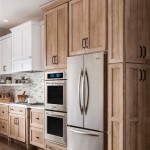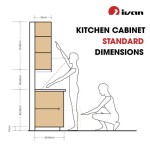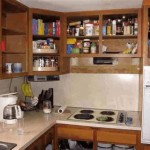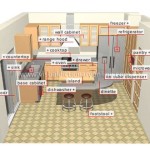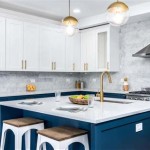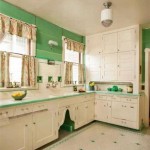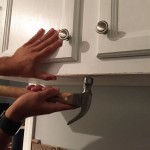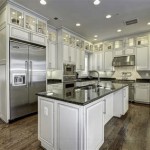Kitchen Cabinet Ideas For 10 Ft Ceilings
Kitchens with 10-foot ceilings present unique design opportunities and challenges. The vertical space allows for dramatic visual effects and increased storage, but can also feel overwhelming if not addressed thoughtfully. The key to maximizing the potential of a high-ceilinged kitchen lies in selecting cabinetry that complements the proportions of the room and enhances its overall aesthetic. This article explores various kitchen cabinet ideas specifically tailored for spaces with 10-foot ceilings, offering insights into design considerations, material choices, and practical solutions to create a functional and visually appealing kitchen.
One of the initial decisions involves determining the overall style of the kitchen. Traditional, modern, and transitional styles each lend themselves to different cabinet configurations and design elements suitable for high ceilings. Traditional kitchens often feature ornate detailing, raised panel doors, and crown molding, which can be extended to fill the vertical space and create a sense of grandeur. Modern kitchens, on the other hand, typically emphasize clean lines, minimalist designs, and flat panel doors. In this case, the height can be utilized to create a sense of spaciousness and openness, often incorporating sleek, handleless cabinets and strategic lighting to highlight the verticality. Transitional kitchens blend elements of both traditional and modern styles, offering a versatile approach that allows for customization and balance.
Maximizing Vertical Space with Stacked Cabinets
One of the most effective ways to utilize the height in a kitchen with 10-foot ceilings is to employ stacked cabinets. This configuration involves placing a second tier of cabinets above the standard base cabinets and upper cabinets, effectively reaching towards the ceiling. Stacked cabinets not only provide additional storage space but also create a visually appealing design element that draws the eye upward, emphasizing the height of the room. The upper tier of cabinets can be used for storing infrequently used items, decorative objects, or even specialized appliances. The visual impact can be further enhanced by using glass-fronted cabinets in the upper tier to display decorative items or collections, adding visual interest and personalization to the kitchen.
When designing stacked cabinets, it is crucial to consider the accessibility of the upper tier. Depending on the height and placement, a step stool or ladder might be required to reach items stored in the top cabinets. Alternatively, motorized lift systems can be integrated into the cabinet design to lower items for easy access. The design of the stacked cabinets should also complement the overall style of the kitchen. For traditional kitchens, incorporating decorative molding and trim can create a cohesive and elegant look. In modern kitchens, clean lines and minimalist hardware can maintain a sleek and contemporary aesthetic. The choice of materials and finishes should also be consistent throughout the cabinetry to ensure a unified design.
The depth of the upper tier cabinets can also be varied to create visual interest and optimize storage. Shallower cabinets can be used to display decorative items, while deeper cabinets can accommodate larger items or appliances. Lighting can also play a significant role in highlighting the stacked cabinets. Under-cabinet lighting can illuminate the countertops and backsplash, while interior cabinet lighting can showcase the contents of the upper tier. Strategically placed lighting can also accentuate the architectural details of the cabinets and create a warm and inviting atmosphere in the kitchen.
Furthermore, consider the practicality of cleaning and maintaining stacked cabinets. Dust can accumulate on the top surfaces, requiring regular cleaning. Selecting cabinets with easy-to-clean finishes and incorporating design elements that minimize dust collection can simplify maintenance. Additionally, ensuring proper ventilation in the kitchen can help to prevent moisture buildup inside the cabinets, which can lead to mold and mildew growth.
Extending Cabinets to the Ceiling for a Seamless Look
Another approach to addressing high ceilings in a kitchen is to extend the cabinets all the way to the ceiling. This creates a seamless and integrated look, maximizing storage space and eliminating the gap between the top of the cabinets and the ceiling, which can often become a dust trap. Extending cabinets to the ceiling can create a sense of grandeur and sophistication, particularly in traditional kitchens. This design also minimizes the visual clutter and creates a more streamlined and organized appearance.
When extending cabinets to the ceiling, it is important to ensure that the cabinets are properly secured and supported. The additional weight of the extended cabinets requires a robust framing system and secure attachment to the wall studs. Professional installation is highly recommended to ensure the safety and stability of the cabinets. The design of the extended cabinets should also consider the architectural details of the room. Integrating crown molding and trim can create a seamless transition between the cabinets and the ceiling, enhancing the overall aesthetic appeal. The style and finish of the molding should complement the cabinetry and the overall design of the kitchen.
In kitchens with uneven ceilings or architectural irregularities, custom-built cabinets may be necessary to achieve a perfect fit. Custom cabinets can be tailored to accommodate the specific dimensions and angles of the room, ensuring a seamless and integrated look. The cost of custom cabinets may be higher than standard cabinets, but the benefits of a perfect fit and personalized design can outweigh the additional expense. Furthermore, the design of the extended cabinets should consider the placement of lighting fixtures and other architectural elements. Incorporating recessed lighting into the cabinet design can provide ambient lighting and highlight the countertops and backsplash. Strategically placed pendant lights can also add visual interest and create a focal point in the kitchen.
The interior organization of the extended cabinets should also be carefully planned to maximize storage efficiency. Adjustable shelves, pull-out drawers, and specialty organizers can help to optimize the use of space and make it easier to access items stored in the upper cabinets. Consider incorporating features such as spice racks, utensil holders, and pantry organizers to keep the kitchen clutter-free and well-organized.
Maintenance is also a key consideration when extending cabinets to the ceiling. Regular cleaning is necessary to prevent dust and grime from accumulating on the upper surfaces. Selecting cabinets with easy-to-clean finishes and incorporating design elements that minimize dust collection can simplify maintenance. Additionally, ensuring proper ventilation in the kitchen can help to prevent moisture buildup inside the cabinets, which can lead to mold and mildew growth.
Creative Design Elements to Enhance Visual Appeal
Beyond simply extending or stacking cabinets, incorporating creative design elements can further enhance the visual appeal of a kitchen with 10-foot ceilings. This can involve using a combination of open shelving, decorative panels, and unique hardware to create a personalized and visually interesting space. Open shelving can be used to display decorative items, cookbooks, or kitchenware, adding a touch of personality and style to the kitchen. Decorative panels can be incorporated into the cabinet design to add texture and visual interest. These panels can be made from a variety of materials, such as wood, metal, or glass, and can be customized to match the overall style of the kitchen.
Hardware is another important element to consider when designing kitchen cabinets for high ceilings. The choice of knobs, pulls, and hinges can significantly impact the overall look and feel of the kitchen. Selecting hardware that complements the cabinetry and the overall design of the kitchen is crucial. In traditional kitchens, ornate hardware with intricate detailing can enhance the elegant and sophisticated aesthetic. In modern kitchens, sleek and minimalist hardware can maintain a clean and contemporary look.
Furthermore, consider the use of color and texture to create visual interest and depth. Painting the cabinets in different colors or using different textures can add dimension and personality to the kitchen. A two-toned cabinet design, with lighter colors on the upper cabinets and darker colors on the lower cabinets, can create a sense of balance and visual harmony. Adding textured glass or metal accents to the cabinet doors can also enhance the visual appeal of the kitchen.
Lighting plays a critical role in enhancing the visual appeal of a kitchen with high ceilings. Incorporating a combination of ambient, task, and accent lighting can create a warm and inviting atmosphere. Recessed lighting can provide general illumination, while under-cabinet lighting can illuminate the countertops and backsplash. Pendant lights can be used to highlight specific areas of the kitchen, such as the island or the sink. Strategically placed accent lighting can also be used to showcase decorative elements and create visual interest.
Artwork and decorative accessories can also be used to personalize the kitchen and add a touch of style. Hanging artwork on the walls, displaying decorative items on open shelves, and adding plants can create a welcoming and inviting atmosphere. The choice of artwork and accessories should complement the overall style of the kitchen and reflect the homeowner's personal taste.
In conclusion, designing kitchen cabinets for 10-foot ceilings requires careful consideration of the proportions of the room, the overall style of the kitchen, and the practical needs of the homeowner. By utilizing techniques such as stacked cabinets, extending cabinets to the ceiling, and incorporating creative design elements, it is possible to create a functional and visually appealing kitchen that maximizes the potential of the high ceilings.

Pin On Kitchens Dining Rooms

Tall Ceiling Kitchen Cabinet Options Centsational Style

Tall Ceiling Kitchen Cabinet Options Centsational Style

Tall Ceiling Kitchen Cabinet Options Centsational Style

Pin On Kitchens

Tall Ceiling Kitchen Cabinet Options Centsational Style

Tall Ceiling Kitchen Cabinet Options Centsational Style

Tall Ceiling Kitchen Cabinet Options Centsational Style

Cabinets To Ceiling Yes Or No

Kitchen Cabinets To The Ceiling Designed

